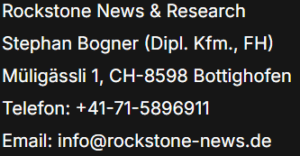From smartphones and electric vehicles to satellites and wind turbines – rare earth elements (REEs) are the hidden foundation of modern technology. They power the clean energy revolution and form the backbone of digital innovation. Yet, they remain among the least understood and most geopolitically sensitive resources on Earth.
For decades, China has dominated the market. But the global race for diversification has begun – and Canada is emerging as one of the most promising players.
The Growing Demand
As the world transitions to renewable energy and electric mobility, the need for rare earths is skyrocketing. Elements like neodymium, praseodymium, dysprosium, and terbium are critical for permanent magnets used in EV motors, wind turbines, and energy storage systems.
Analysts expect demand to double by 2035. That surge is turning rare earths into what some call the “new oil” – strategic, indispensable, and politically charged.
China’s Dominance and the Global Shift
China still controls around 70% of global mining and over 85% of refining capacity. This imbalance has exposed Western industries to supply risks and geopolitical pressure. Recent export restrictions on advanced processing technologies have further underscored the urgency for diversification.
In this race for supply security, Canada stands out as a stable democracy with vast geological resources and close ties to both the U.S. and Europe.
Canada – The Sleeping Giant Awakens
Few countries boast such geological diversity. Quebec, British Columbia, and the Northwest Territories hold some of the largest known rare earth deposits outside of China. Yet for decades, development remained limited.
That is changing fast.
-
Stable governance and ESG standards build investor confidence.
-
Proximity to the U.S. enables strategic supply partnerships.
-
Rising global interest has sparked new exploration and pilot projects.
-
Clean energy infrastructure makes extraction more sustainable.
Projects in Quebec and Saskatchewan are already showing that responsible, transparent rare earth production is possible in the West.
Why Canada Has Real Momentum
Beyond geology, Canada’s strength lies in innovation and sustainability:
-
Digital exploration with AI and advanced geodata.
-
Clean processing technologies and circular economy models.
-
Localized value chains, from mining to refining within Canada.
Rather than competing on cost, Canada offers an alternative model: ethical, sustainable, and transparent resource development – exactly what Western industries and policymakers are calling for.
A Strategic Opportunity
The rare earth market is evolving rapidly. Prices are expected to remain strong, while technology-driven efficiency gains could make Western projects more competitive.
Canada represents more than a resource opportunity – it embodies a shift in mindset. It stands for partnership, innovation, and responsibility in an era where critical materials define global progress.
If momentum continues, Canada could become one of the most important rare earth suppliers of the next decade – not just for North America, but for the entire Western world.
Conclusion
Rare earths are the invisible force behind the green and digital revolutions. After decades of dependency, a new chapter is opening.
With its natural wealth, political stability, and commitment to sustainability, Canada has every chance to lead the way – transforming from a sleeping giant into a cornerstone of the global energy transition.

Andy Schmidt
Kontakt

Disclaimer: Dieser Artikel dient ausschließlich der Information und stellt keine Anlageberatung oder Empfehlung zum Kauf oder Verkauf von Rohstoffen oder Wertpapieren dar. Alle Einschätzungen und Prognosen entsprechen dem Stand zum Zeitpunkt der Veröffentlichung und können sich jederzeit ändern. Für die künftige Entwicklung gibt es keine Garantie. Investitionen in Rohstoffe sind mit Risiken verbunden. Die Konsultation eines zugelassenen Finanzberaters wird ausdrücklich empfohlen.












